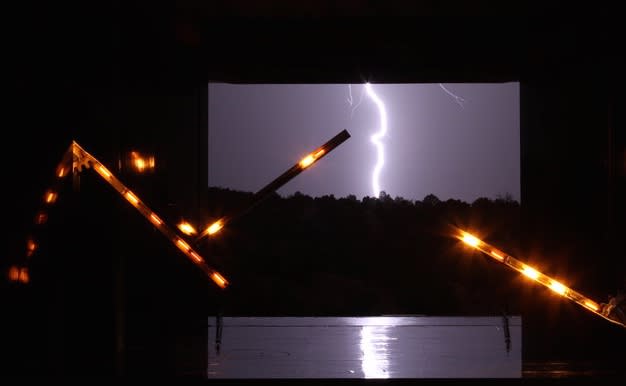
Special thanks to Emily Doyle Moore, Director of Media & Public Relations, Santa Fe Opera, for her assistance on this post. Structural Engineers: Ove Arup & PartnersĪwards: New York American Institute of Architects Design Award (1998)

McHugh and Van Dorn HookerĪcoustical Engineer: Bolt, Beranek, and Newmanġ968 Theatre Architects: McHugh and Kidder ArchitectsĪrchitects: Polshek Partnership Architects, LLP © Dune Alford / Photo courtesy of the Santa Fe OperaĪrchitect: John W. Wind and rain baffles, that resemble paper lanterns, were added to the south side of the auditorium seating. The lower surfaces of the roofs are detailed to provide the required acoustical performance. The two roofs are connected with a clerestory. The new balcony roof also uses masts and cables to support that portion of the structure. The solution has three basic systems: the existing columns the roof plane with an internal steel frame and the upper rigging that rests on the columns and holds up the extensively cantilevered edges. The design of the new roof met many challenges: (1) be much larger to cover an increased seat count (2) light-weight enough to reuse the existing columns to avoid time-consuming construction of new footings and column replacement (3) be made of components that can be pre-fabricated off site and brought on site after the summer season then assembled during the winter of 1997-98 and (4) have the necessary acoustical properties to support operatic performances. Sketch by Edie Cherry based on Nordenson’s Drawings Extensive planning preceded the demolition so that the theatre would be ready by July 1998, a short 10-month construction period.

The building underwent significant reconstruction beginning in 1997 after the opera season. This original site remains the location of the current Crosby Theatre. In 1967, a fire destroyed the theatre, but it was rebuilt in 1968, to accommodate 1,889 patrons.

It was located on a west-facing basin selected for its acoustical properties and the views of the valley below. The original theatre, built in 1957, held 480 seats. © Ken Howard / Photo courtesy of the Santa Fe Opera Another unique feature is that sunsets and summer storms can be viewed through the opening in the rear of the stage. The Crosby Theatre, performance venue for the Santa Fe Opera, is an open-air theatre with a unique roof structure.


 0 kommentar(er)
0 kommentar(er)
